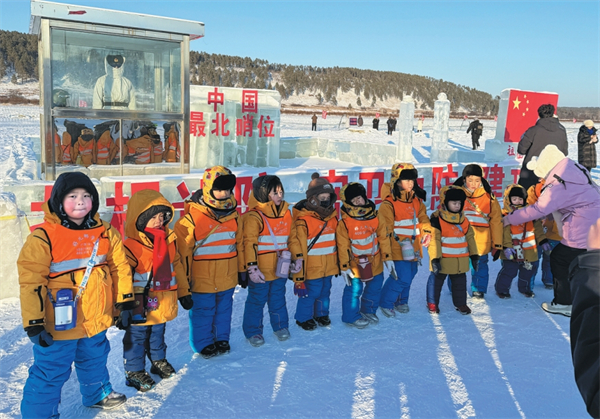Home>Investment Overview
Business environment
Updated : 2020-02-28
By ( e.my399.com )
Harbin is located to the southwest of Northeast China’s Heilongjiang province, and the center of Northeast Asia. As a megacity with the largest area among provincial cities and the third-largest population in China, Harbin is the political, economic, and cultural center of Northeast China. Harbin is also a key city on the first Eurasian Land Bridge and a key air corridor.
Transportation
Air
There are 53 Chinese and foreign airlines offering services at Harbin Taiping International Airport. They operate a total of 201 domestic and international air routes, which link Harbin to 113 destinations in China, Russia, Japan, South Korea, the United States, as well as countries in Europe and Southeast Asia.
Of these, Harbin airport operates eight flight routes to Russia, connecting Harbin city to Khabarovsk, Yuzhno-Sakhalinsk, Yakutsk, Krasnoyarsk, Irkutsk, Novosibirsk, Yekaterinburg and Moscow.
The flights operated out of the airport to Russia account for 85 percent of the whole Northeast China region to that country. Additionally, Harbin airport is the second largest base in China operating China-Russia flights.
In 2019, the airport handled 20.78 million passengers and 145,671 flights, achieving a year-on-year increase of 1.7 percent and 0.6 percent respectively.
Metro
Currently, there are two metro lines in operations, namely metro line 1 and metro line 3.
Meanwhile, a total of three metro projects are under construction and are scheduled to start operations within two years—the third phrase of metro line 1, the first phrase of metro line 2 and the second phrase of metro line 3.
In the near future, construction of the first phrase of metro line 4, the first phrase of metro line 5, the second phrase of metro line 2 and the fourth phrase of metro line 1 will start.
Natural Resources
Harbin is situated on a plain with 1.98 million hectares of agricultural land, most of which boasts black soil rich in nutrients. Originating from Tianchi Lake on Changbai Mountain, the Songhua River travels across the middle of Harbin from east to west, making it the river with the largest irrigation volume. There have been 63 types of mineral resources discovered in Harbin, and 25 varieties of mineral reserves. There are 14 nature reserves at provincial or national level. The total area of nature reserves is 217,000 hectares. There are 80 kinds of wildlife and eight varieties of plant that are listed as priorities for protection.
Industry
Harbin boasts a diversified industrial base. It’s now building a "4 + 4" modern industrial system, with green agricultural product deep processing, advanced equipment manufacturing, as well as a modern biomedicines and tourism industry as its pillar industries, -- and with information, new materials, finance and modern logistics as its rapidly developing sectors.
Scientific Research
There are nine State-level enterprise technical centers and 121 provincial-level enterprise technical centers in Harbin. More than 39,000 people are engaged in scientific research institutions, such as colleges and universities, research institutions and industrial enterprise research and development centers.
The number of patent applications was 22,373 in 2018, an increase of 5.0 percent over the previous year; and 12,077 patents were granted, a decrease of 0.3 percent. Of these, the number of invention patent applications was 9,455 and invention patent authorizations totaled 3,635.
Meanwhile, a total of 3,206 technology contracts were signed throughout the year, with a turnover of 15.42 billion yuan, representing an increase of 13.2 percent.
Since a "market introduction" pilot for the transformation of scientific and technological achievements was implemented in 2018, 359 scientific and technological achievements at universities and colleges have been commercialized and 46 new technological incubators were established.
Economy
Harbin’s GDP reached 630.05 billion yuan ($91.43 billion) in 2018, an increase of 5.1 percent year-on-year. The added value of the primary industry totaled 52.55 billion yuan, a year-on-year decrease of 0.1 percent; the added value of the secondary industry was 168.93 billion yuan, an increase of 2.7 percent; and the added value of the tertiary industry was 408.57 billion yuan, an increase of 7.5 percent.
The proportion of Harbin’s industrial structure was adjusted from 9.5: 29.1: 61.4 in the previous year to 8.3: 26.8: 64.9.
Per capita GDP of the resident population was 57,837 yuan, an increase of 5.6 percent compared with that of the previous year.
The total value of imports and exports for the whole year was 20.97 billion yuan, a decrease of 8.0 percent over the previous year. Of this, exports totaled 10.35 billion yuan, an increase of 5.2 percent and imports were 10.62 billion yuan, a decrease of 18.0 percent.
With regards to commodity categories, imports and exports of agricultural products totaled 6.33 billion yuan, a decrease of 11.1 percent; imports and exports of mechanical and electrical products was 8.82 billion yuan, a decrease of 12.5 percent; and imports and exports of high-tech products was 2.24 billion yuan, a decrease of 31.9 percent.
Russia is the largest trade partner of Harbin due to the close proximity of Harbin, lying in China’s northernmost Heilongjiang province — at the border of China and Russia.

Harbin ramps up childcare services
A new comprehensive service center for childcare in Harbin is expected to be finished by the end of the year.
-
Talent policies drive enterprise development in Harbin
Harbin's "30 New Talent Policies" represents an iterative upgrade to the talent policy system, helping attract and retain talent to bolster economic and social development.
-
Official website of 2025 Asian Winter Games goes live
Harbin, the host city of the 9th Asian Winter Games, has announced that the official website for the 2025 event has recently gone live.
-
Harbin launches measures to facilitate more foreign trade
In the first three quarters of 2023, the total import and export value of Heilongjiang province's goods trade hit 218.22 billion yuan.





